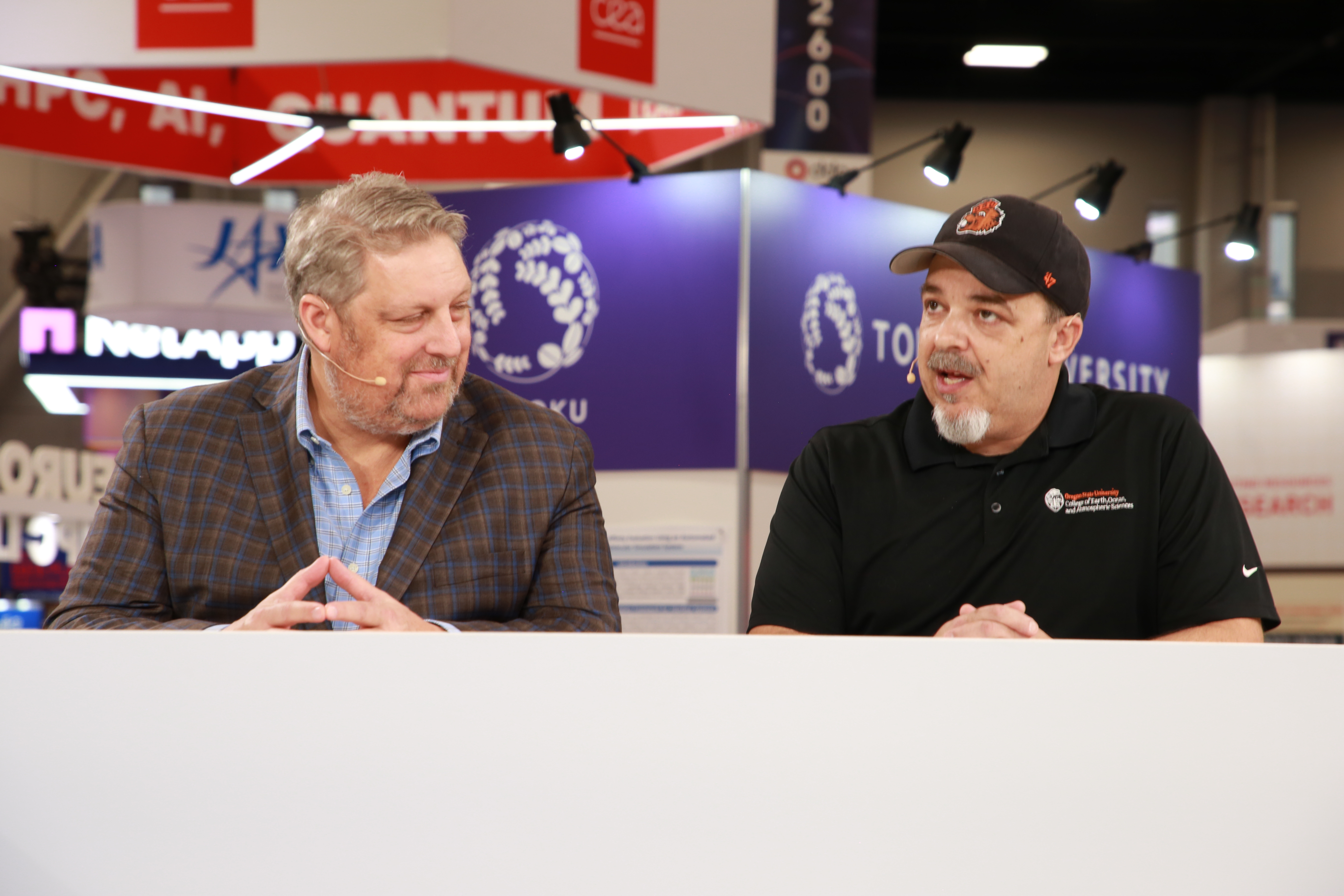 AI
AI
 AI
AI
 AI
AI
Artificial intelligence and high-performance computing could be the next steps to saving endangered species.
Super Micro Computer Inc. works with the United States Forest Service to monitor spotted owls, one of the endangered species in the Pacific Northwest. The team, led by Chris Sullivan (pictured, right), director of research and academic computing at Oregon State University, has spread out 5,000 autonomous recording units across the owls’ habitat to sample sounds and analyze them using a specialized algorithm.
“I can just record the forest and I can tell you what the species are, I can tell you when a tree falls in the forest and no one was there,” Sullivan said. “We try and couple that with camera trap data as well. I can do Doppler shift and tell you which direction [the bird’s] heading. We can even get down to the individual bird sometimes and know and track the individual bird.”
Sullivan and Josh Grossman (left), principal product manager at Supermicro, spoke with theCUBE’s Dave Vellante and Savannah Peterson at SC25, during an exclusive broadcast on theCUBE, SiliconANGLE Media’s livestreaming studio. They discussed the role of technology, specifically AI, in scientific research. (* Disclosure below.)
The goal of Sullivan’s work with Supermicro is to save endangered species and enable more positive lumbering practices. By applying AI to the problem of forest diversity, researchers such as Sullivan can analyze the data from their chosen area at a more complex level.
“As we move past the training of models, now we’re getting to the deployment of inference models,” Grossman said. “There’s still going to be a lot of training happening but inference is going to really move into the fore and that’s a lot of what [Sullivan] is doing.”
The biggest issue facing scientific research is processing large amounts of data, Sullivan emphasized. Science organizations could have raw data going back decades and are often trying to track how environments change over time. Sullivan’s research, however, requires close to real-time data.
“By pushing inference out toward the edge, we reduce the impact of managing the data,” he said. “We also create a better temporal aspect to that data. If I can’t get through the data quickly enough, it’s meaningless for the forest and the lumber industry to actually make active decisions.”
Supermicro has worked with Sullivan to put liquid-cooled graphic processing units on workstations so they could collect data out in the forest, in near real-time. With Nvidia Corp.’s Grace Hopper Superchips, researchers can now take advantage of unified memory.
“Where it used to be eight GPUs, you can now have one GPU,” Grossman said. “And one Grace Hopper processor with 576 gigs of shared memory where you used to have eight GPUs. That kind of shared memory economics … it’s definitely good enough to do these sorts of training drills.”
Here’s the complete video interview, part of SiliconANGLE’s and theCUBE’s coverage of SC25:
(* Disclosure: Solidigm sponsored this segment of theCUBE. Neither Solidigm nor other sponsors have editorial control over content on theCUBE or SiliconANGLE.)
Support our mission to keep content open and free by engaging with theCUBE community. Join theCUBE’s Alumni Trust Network, where technology leaders connect, share intelligence and create opportunities.
Founded by tech visionaries John Furrier and Dave Vellante, SiliconANGLE Media has built a dynamic ecosystem of industry-leading digital media brands that reach 15+ million elite tech professionals. Our new proprietary theCUBE AI Video Cloud is breaking ground in audience interaction, leveraging theCUBEai.com neural network to help technology companies make data-driven decisions and stay at the forefront of industry conversations.